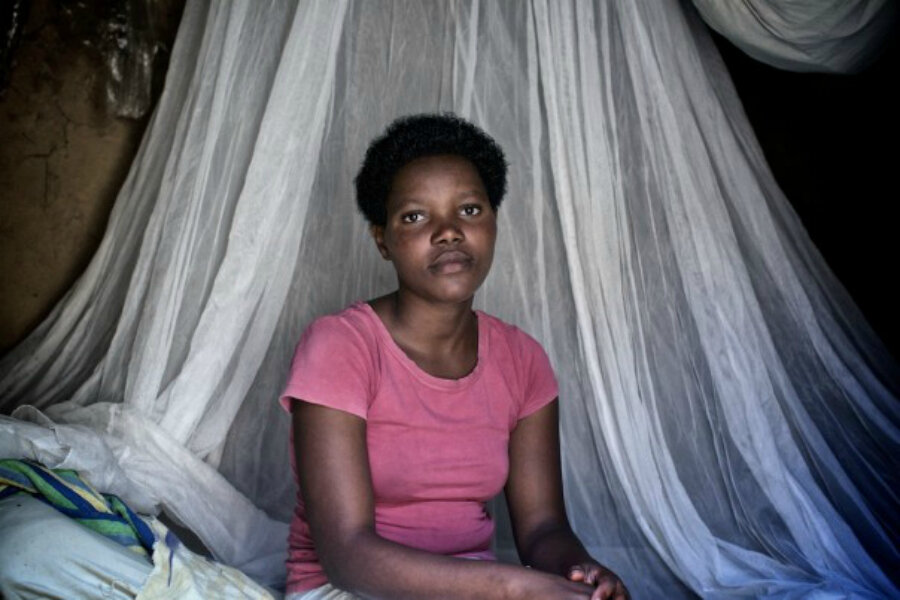Young Rwandans build a nation of peace
| LONDON
A long row of school kids are seated on the woodland floor, heads bowed in remembrance of local teachers killed protecting their charges during Rwanda's genocide 20 years ago.
It's a haunting image of what these children have lost, but also what some of them have found: unity.
Award-winning photographer Carol Allen-Storey met the children earlier this year, among 60 young adults she photographed for an exhibition that opened in London on Thursday [Sept.18].
Some bear the stigma of being a child of a killer or a child born of rape. Some were orphaned in the violence, and a few are full-time carers of their deeply traumatized parents.
"I traveled the length and breadth of Rwanda ... They all said very simply: 'If we are not united, we will fail as a nation and we will fall back into war,' " said Allen-Storey, who is UNICEF ambassador for photography.
"Their whole thought was that if you hold onto hate you have no future," she said. "All of them said they must learn to forgive, that they must not embrace their parents' prejudices."
Below the surface, communities in Rwanda are still deeply divided and there is a real danger that violence will break out again without greater healing and reconciliation, according to International Alert, a London-based international peacebuilding NGO which organized the exhibition, "The Amahoro Generation", ahead of International Day of Peace on September 21.
In the 100 days of slaughter that began on April 6, 1994, Hutu government soldiers and allied extremist militia orchestrated a genocide to destroy the Tutsi minority. Across the country, some 800,000 Tutsis and moderate Hutus were killed.
Hatred and divisions between the two sides stretches back generations, and this is what the young adults want to change.
"The youth of 1994 were known as the butchers, brutal killers," David, 19-year-old son of a survivor of the genocide from Masaka, is quoted as saying in the exhibition.
"The youth then were taught hate and division, now we must educate about unity," added David, who dreams of becoming an engineer.
Some of the stereotypes of the Tutsis and Hutus go back to colonial times. Tutsis were viewed as elegant, tall, educated, with land and cattle. Hutus were viewed as unattractive, poor, uneducated farmers.
The 1994 genocide was not the first time tensions between Hutus and Tutsis had erupted into violence. In 1959, tens of thousands of Tutsis fled to Uganda to escape killings.
Claudette, 15, a daughter of a genocide survivor in Kigembi, said: "To eliminate the chance of another genocide occurring we must eliminate anything that leads to discrimination and violence, because if we do not, our future is doomed. The key is not to be jealous of one another."
Some of the young people say they want to become the country's future leaders, and some want to find careers that will help them overcome the legacy of their past.
Evariste, 22, from Gatumba, said he experienced years of isolation and guilt because his father had been a soldier for the Hutu Interahamwe militia. "I would like to be a doctor. I think if I could save some lives it would remove the wound I carry from my father's legacy as a killer."
One 21-year-old woman shocked Allen-Storey when she revealed she had never heard of the genocide and had no idea it had happened.
"It shows you that some things are still hidden," Allen-Storey said.
The photographs were displayed in a garden by the river Thames in central London until Sept. 28. It's a peaceful spot. ( Editing by Tim Pearce)
• This article originally appeared at Thomson Reuters Foundation, a source of news, information, and connections for action. It provides programs that trigger change, empower people, and offer concrete solutions.








